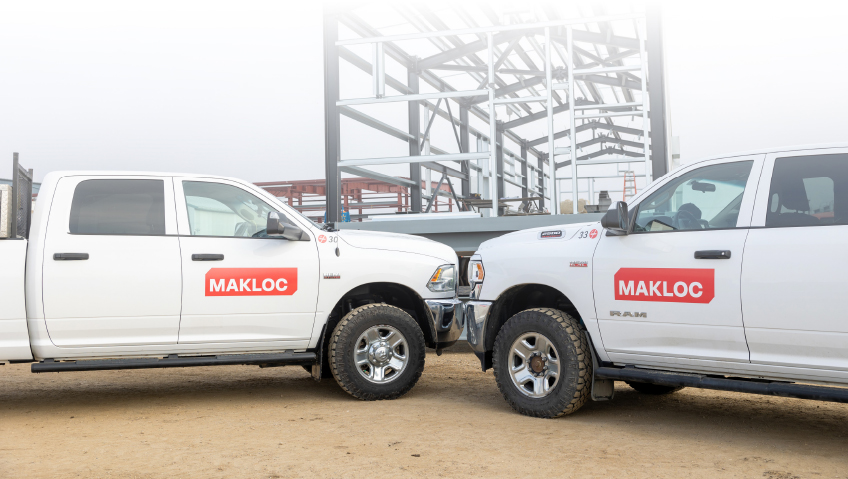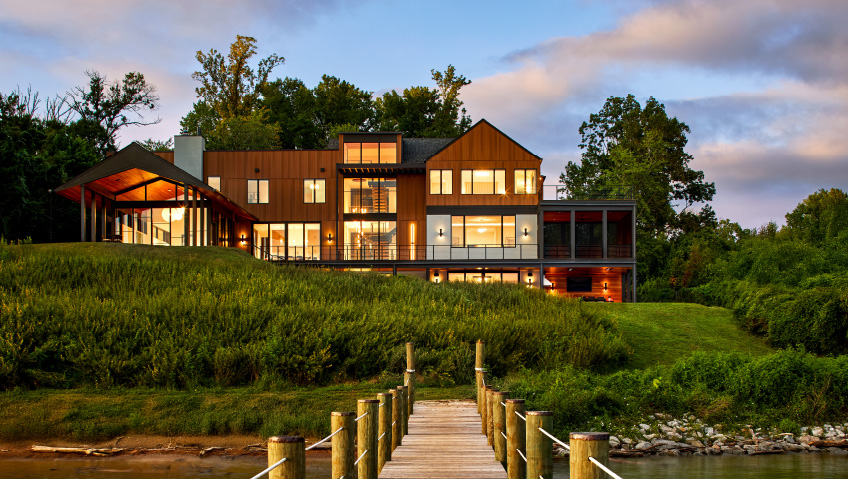For over 50 years, Alberta-based Makloc has served the building needs of customers in oil and gas, commercial and industrial, and the renewable energy sector. Known for quality, customer service, and on-time project delivery—no matter how far-flung the project—Makloc is a one-stop shop for both modular and field construction projects.
“Makloc aims to be a trusted advisor to our clients, and we are looking to take as much work off their plates as possible,” says 11-year company veteran Matthew Blumer, Vice President of Corporate Development and Sales.
Makloc serves a range of clients, especially in the energy sector, including midstream and upstream oil and gas companies, engineering firms, smaller fabricators, and other businesses. Based in Nisku, Alberta, the company is ideally located to serve customers in Western Canada, since it can deploy resources quickly and economically to erect buildings.
Makloc’s experienced team takes on as much scope as possible by working closely with end users. Using this collaborative approach, Makloc creates buildings of all sizes to suit each customer’s unique requirements. This work includes the building itself, structural steel skid, and electrical/mechanical integration services contracted through partnering businesses.
For customers, other benefits of working with Makloc are the company’s business structure and its relationships with other entities. Alberta-owned Makloc is allied with American Buildings and VP Buildings, giving them an even broader range of available products and solutions to offer their customers. Makloc’s services today encompass building design, fabrication, construction, expansions, general contracting, tenant improvement, and project management.
Depending on client needs, Makloc supplies buildings both small and large, ranging from small modular sheds up to large pre-engineered stick-built buildings. Smaller structures are often used as storage sheds, while larger buildings can be used to house major process equipment.
“It’s a massive range,” says Blumer, adding that the company also sells building components for repairs and maintenance. Since Makloc is located on Alberta’s High Load Corridor, the company can ship large buildings across the province and beyond. If customers want to go the modular route, buildings can also be split and shipped in numerous pieces.
Makloc takes its tagline “Helping Companies Grow, Expand, And Meet Customers’ Demands” seriously. Providing everything from small storage sheds up to very large stick-built rigid frame structures, Makloc purpose-builds its structures. For field-erected construction, structures can also be designed to enable expansion in the future, if required.
On the modular side, Makloc’s buildings are used to house electrical equipment, process pipe, pumps, and other industrial process equipment where there is a benefit to assembling the modular building away from the end destination site, which is often in remote locations. “We offer our mod yard to completely integrate a building, test it, and get it to the point where all that needs to be done in the field is essentially plug-and-play,” explains Blumer.
Modular buildings are ready to go once they arrive on site, which minimizes costs and any safety-related concerns that come from doing work in remote locations.
For field construction, Makloc builds everything from storage structures to buildings housing process equipment, pumps, or compressors that are too large to be modularized.
In one substantial project, the company was involved with a major Western Canada pipeline expansion running from Edmonton to Vancouver. Working closely with clients, the company provided over 40 buildings including modular electrical service structures, fire suppression stations, and stick-built pump buildings over a 1,000 km (621 mile) area. “Successfully managing manpower and logistical challenges throughout the project was a testament to our team’s experience and commitment to our customers,” says the company on its website.
On the renewables side, the company is also involved with a Net Zero Hydrogen Energy Complex in Sherwood Park, Alberta. Already well-established in oil and gas, Makloc is pleased to be in the next wave of renewable energy projects as well. “Wherever a significant industrial complex needs to be developed, there’s a need for structural steel buildings,” says Blumer. “So we’re excited to be involved in hydrogen and the future of the energy industry.”
Certified CSA-A660 and CSA-A277 on request, Makloc’s Self Frame Buildings are ideal for everything from storage to field offices and telecommunication buildings to generator enclosures. An innovative interlocking ribbed panel system acts as the primary structural support, maximizing interior floor space. Compliant with the National Building Code of Canada, these Self Frame Buildings come complete with engineer-stamped drawings. Available in a wide variety of colours including Stone Grey, Mist Green, Sapphire Blue, and Gold, the company’s state-of-the-art custom roll-former forms interlocking ribbed panels in just seconds from 18- to 22-gauge sheet metal. “It’s easily switched between wall and roof panels, and 3” and 4.5” rib depths,” says the company. “This allows for quick set-up time and ensures consistent quality on every project.”
Makloc’s interlocking, self frame building system has been a popular offering from the company for decades and is widely used in Western Canada’s oil and gas sector. A tried and true cost-effective building solution, these structures are perfect for customers seeking robust structural steel construction. Much longer-lasting than wood—and with ULC fire-rated wall systems—their structural integrity particularly suits industrial applications.
“The great thing about the interlocking wall system is you eliminate the need for a skeletal, structural rigid frame,” says Blumer. “Then you’re going to have columns and secondary steel creating more congestion inside the building. So, when someone is working with a self frame building system, you get a clean, flat interior wall system, optimizing space in the building.” The only limitation is size, and how large the building can be before it requires a rigid frame.
Both main product lines, self frame and rigid frame buildings, can be customized. “Between the two of them, there’s a tremendous amount of customization that can go on,” says Blumer. To ensure quick supply, the company stocks ample amounts of steel coil.
For the sake of efficiency and respect for timelines, all customers are assigned a dedicated project manager for their project. Serving as the primary point of contact, project managers coordinate with internal and external stakeholders, adhere to customers’ unique processes and quality requirements, and provide schedule updates. Depending on client knowledge, PMs walk them through the process with approval drawings and designs and outline each stage of the project from design to final turnover.
To maximize efficiency and help with budgets, traceability, and project scheduling, the company has invested in STRUMIS, an innovative steel fabrication management information software. “We’re constantly investing in technology and expanding our facilities,” says Blumer, noting that the company recently expanded its capacity by 30 to 40 percent. By investing in staff and technology, Makloc remains cost-competitive while maintaining the highest level of quality.
With about 100 employees and scaling up at present, Blumer expects staffing levels to soon increase by another 15 to 20 percent, based on workload. “We’ve been in business for over 50 years, so we have a lot of really great industry partners and clientele who have been with us for decades,” Blumer shares. “For us to grow and ensure we continue to grow, we need to continue to diversify our client base, while consistently supporting our loyal customers.”
He says that “the main focus is organic growth, and part of that comes from improving efficiencies so we can increase throughput. That is supported by deploying new technology—whether that’s leveraging new tools to optimize business processes, investing in robotic CNC equipment for streamlining production, or expanding our production facilities.”






